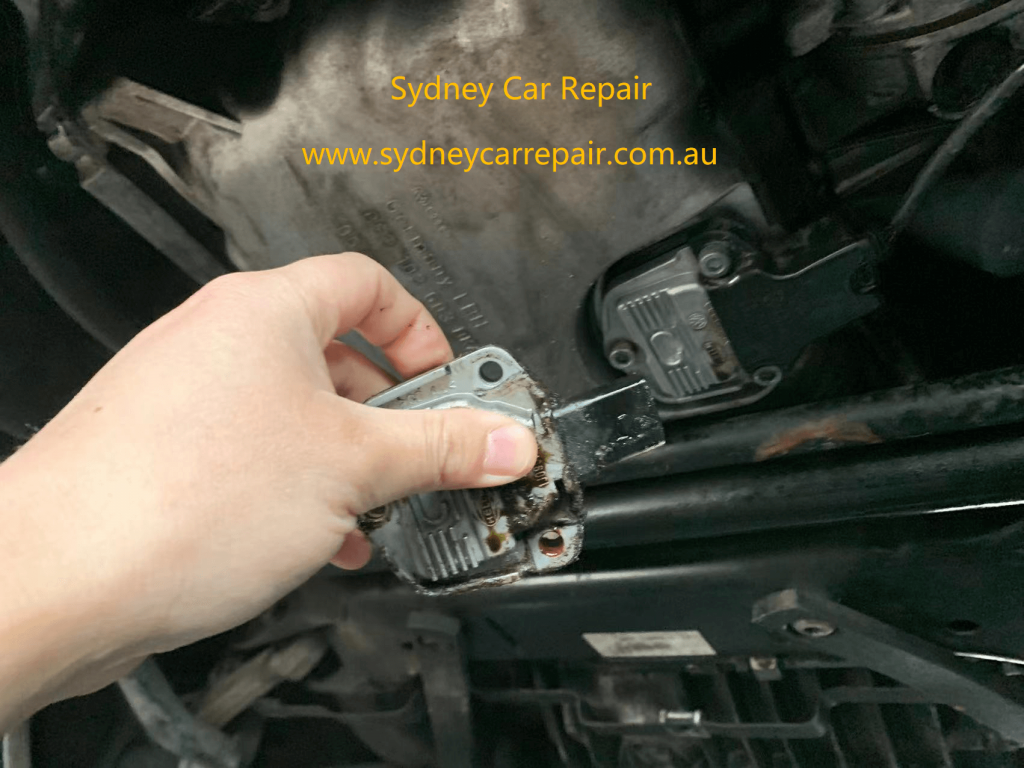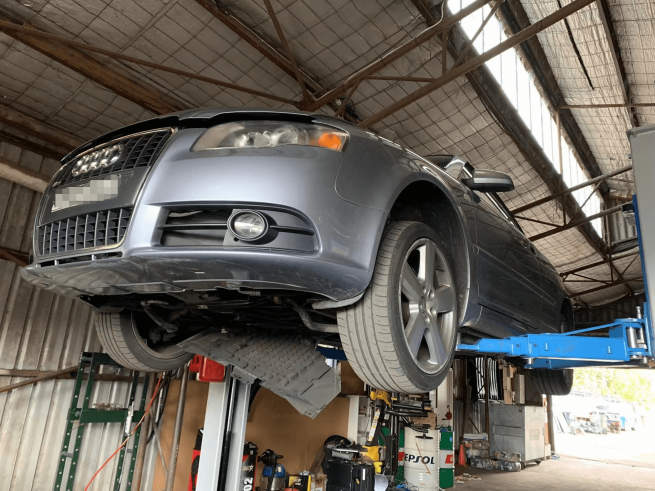What Is An Oil Level Sensor?
The oil level sensor is a device that monitors the liquid level in the engine oil tank, ensuring your engine has enough oil and runs smoothly. Its job is to alert you if there’s a low oil level or even little oil leaks.
The sensor measures motor oil levels in a dynamic range (when the engine is running) and a static range (when the engine is off).
Now, let’s take a look at the four different types of oil level sensors:
Mechanical sensors: The mechanical oil level sensor has several common applications. In these oil level sensors, the switching occurs when the float switch (within the sensor) moves against a micro switch at actuation levels or through magnetic operation. Float-style mechanical sensors aren’t suitable for high viscosity oils.
Pneumatic sensors: This sensor is a relatively low-cost technique for point level monitoring in a lube system best suited for hazardous conditions. Here, the process liquid makes no contact with the sensor’s moving parts and instead uses a column of air against the diaphragm to actuate the switch.
Ultrasonic sensors: The ultrasonic sensors are non-contact liquid level sensors that can sense highly viscous liquids and bulk solids. These sensors comprise a single multi-chip module integrated with a pressure sensor, temperature sensor, and an ASIC (Applications Specific Integrated Circuit.)
This device has greater shock and vibration resistance and uses acoustic waves to measure the liquid level of oil and even hydraulic fluid.
Conductive sensors: Conductive oil level sensors are ideal for point level detection of highly corrosive liquids like hydraulic fluid or caustic soda. While this type of sensor isn’t a very popular choice for oils (as oils typically have an insulating property), we’ve included it since many conductive liquids are on the market.
4 Symptoms Of A Faulty Engine Oil Level Sensor
The oil level sensor measures oil levels in the oil tank, much like how the fuel level sensor monitors fuel levels in the fuel tank.
This device protects the car’s engine by notifying the driver of rapid oil loss or an oil leak. It also indicates when the engine needs an oil change and monitors the oil pressure and the oil level.
Knowing when you have a faulty oil level sensor helps prevent unnecessary damage to your engine. Here are the most common signs:
- Inaccurate Oil Reading
A faulty oil level sensor may trigger incorrect ECU (Engine Control Unit) readings. This results in the oil level or low level warning light illuminating even when oil levels are normal.
So how do you tell when your engine oil level sensor is not working?
Here’s what you can do if your oil level warning light comes on:
Check oil levels using a dipstick
Monitor the oil pressure via the oil pressure switch
See if your engine needs an oil change
Look out for signs of an oil loss
If your oil sensor light continues to light up despite everything being normal, it could mean your oil level sensor is malfunctioning.
- Oil Light Blinking Sporadically
The oil sensor’s function is to detect the oil level in the oil tank when the engine is off.
If the oil light blinks sporadically or comes on after you’ve been driving for a while, it could point to a failing engine oil level sensor. This is usually caused by a faulty engine oil management system, which incorrectly triggers low oil levels or oil pressure warnings.
- Check Engine Warning Light Comes On
Incorrect readings from the oil level sensor can sometimes trigger the check engine light on your dashboard.
When the check engine warning light is illuminated, first, ensure that your oil pressure, engine temperature, and oil levels are normal. You should also make sure the oil is clean, and there is no obvious oil leak in the engine (like a little oil puddle under your car).
Nonetheless, an illuminated check engine light can signify many things, so it’s best to have the oil sensor and the oil pump checked by a reputable mechanic.
- Vehicle Not Starting
The oil level sensor is responsible for sending warning signals to the ECU (Engine Control Unit.)
However, a faulty oil level sensor or oil pressure sensor may detect incorrect oil readings.
Sometimes, when the oil level sensor is not working, it might send incorrect codes to the ECU. This causes the ECU to cut off the ignition and fuel, preventing your engine from starting up.
In this situation, your mechanic will need to download the error code, pinpoint the actual problem, and perhaps replace the oil level sensor.

What is the Reason An Oil Level Sensor Go Faulty ?
The following are the most common reasons why an oil level sensor might not function properly:
- An internal short circuit
- Sensing elements failure
- Sensor electronics failure
- A missing voltage or ground connection
- Potential oil leak through damages in the sensor housing
- Apart from this, factors like climate, or driving habits, can also affect the overall health of your engine’s oil system in general.
What Tools Do You Need to Carry the Work
There are a number of tools you will need in order to complete the replacement, along with a clear space you can use to jack up your vehicle so you can reach underneath safely. The following tools will be required:
– A Trolley Jack
– 4x Heavy Duty Axle Stands
– Mechanic Tool Set
– Bucket or alternative plastic container
– Old towels or rags
– Sealant to reinstall oil pan [Optional]
Steps to Replace your Oil Level Sensor
Replacing a bad oil level sensor with a new sensor is complicated and time-consuming. So, if you’re unfamiliar with DIY repairs, you should contact a reputable mechanic.
- Park the car on a flat surface
Make sure your car is on a completely flat surface as this will make sure it doesn’t move while you have the car raised. Safety is of the utmost importance when you are raising or ‘jacking up’ the vehicle, so make sure you also have plenty of space around the vehicle to move.
- Use trolley jack and axle stands to raise car
Check your vehicle handbook to find out where the best points on the underside of the car are located in order to raise it. There will either be a strong point under the car or even a solid mount area or reinforced seam weld where you can position the trolley jack.
Lift the front of the car before placing axle stands under both sides of the vehicle. Then lower the jack onto the axle stands. Repeat for the rear of the vehicle and remember to take your time, ensuring that the car is stable on the stands.
- Remove engine tray
Once the car is nice and secure, it’s time to remove the engine tray. The removal will differ depending on your Mercedes vehicle, but generally it requires the removal of 8mm bolts that hold it in place. Remove these and the tray should come straight off. Put aside along with the bolts for reinstallation.
- Remove drain plug and drain oil
The position of the drain plug can differ depending on the vehicle, but before you loosen it, position your plastic container to catch the draining oil. On a C-Class Mercedes the drain plug is 13mm. Oil will drain immediately so be ready with the container, and be prepared to adjust the positioning as the flow lessens. When it has finished draining, either replace the plug or use a brand new one if required.
- Replace Sensor
On some models you will also need to remove the oil pan completely by removing all torx bolts. This can be a tricky as the pan is often sealed to the engine and will need to be pried off as carefully as possible. This will reveal the position of the oil level sensor. Disconnect the wiring and remove any additional bolts before removing the sensor. Take the new sensor and install. Remember that when reinstalling the oil pan you will need to clean the surface prior to applying new sealant.
- Refill the engine oil (and replace oil filter if required)
Once the oil pan has been affixed, you can refill the oil tank to the desired level. Whilst you are there, you could also change your oil filter if the old one is clogged for any reason.
- Reinstall engine tray
Last but not least, reinstall the engine tray with the same 8mm bolts and make sure it is nice and tight. At this point you can then slowly lower your car off the axle stands by raising the car with your trolley jack.
All of our car servicing and car repair jobs are carried out by licenced vehicle technicians with years of extensive experience across all popular and luxury makes and models.
Our Address: 71 Atkins Road, Ermington, NSW 2115

Turn on Your Camera and Scan Me to add our contact detail to your phone.
If you are live in Eastwood, Carlingford, Ermington, and you need to have your car service and repair near me, car maintenance near me, car mechanic near me sydney you are welcome to visit our car mechanic shop to get it done. We do car servicing and car repair job for people for the Eastwood, Carlingford, Epping, Ryde, Ermington, and all the rest of Sydney, Australia. Mechanic near me car, repair near me, vehicle repair near me. Tyre repair near me, tyre replacement near me.
If you need mechanic near me or car repair or used car inspection near me, we can repair most of the following car’s and repair for you in sydney: TOYOTA, HONDA, BMW, BENZ, MINI, NISSAN, Mitsubishi, Subaru, Audi, Volkswagen, Hyundai, Ford, Holden, JEEP, tesla and many more。


